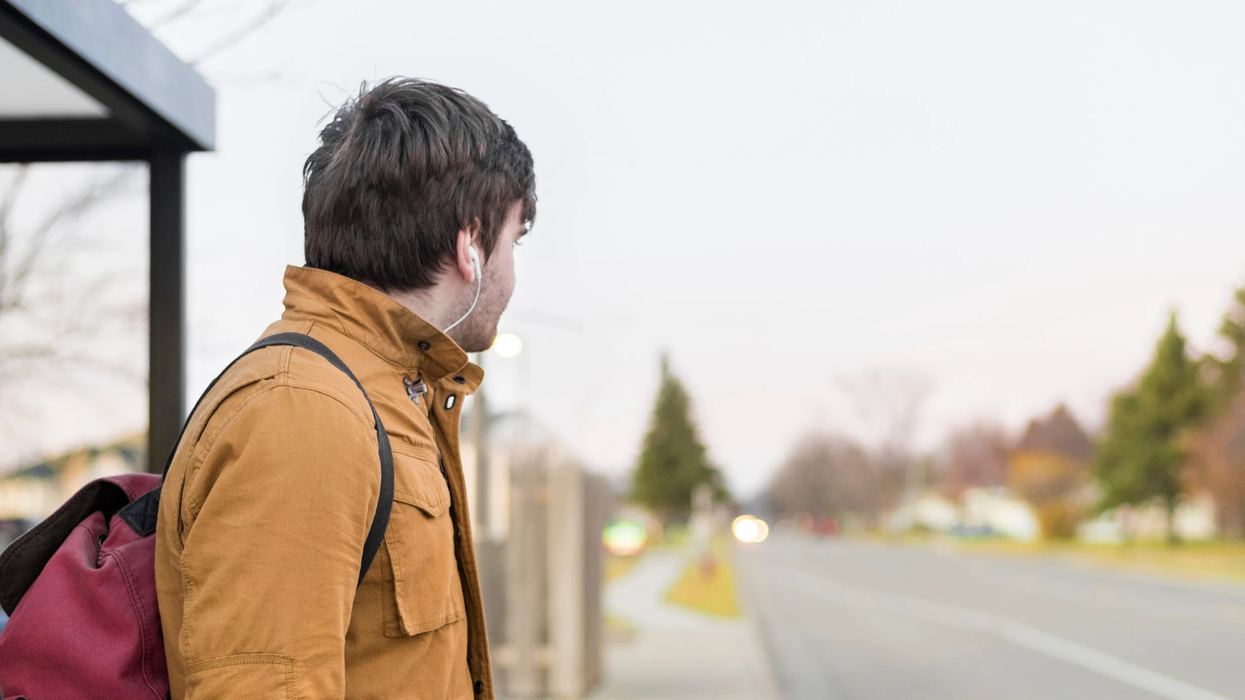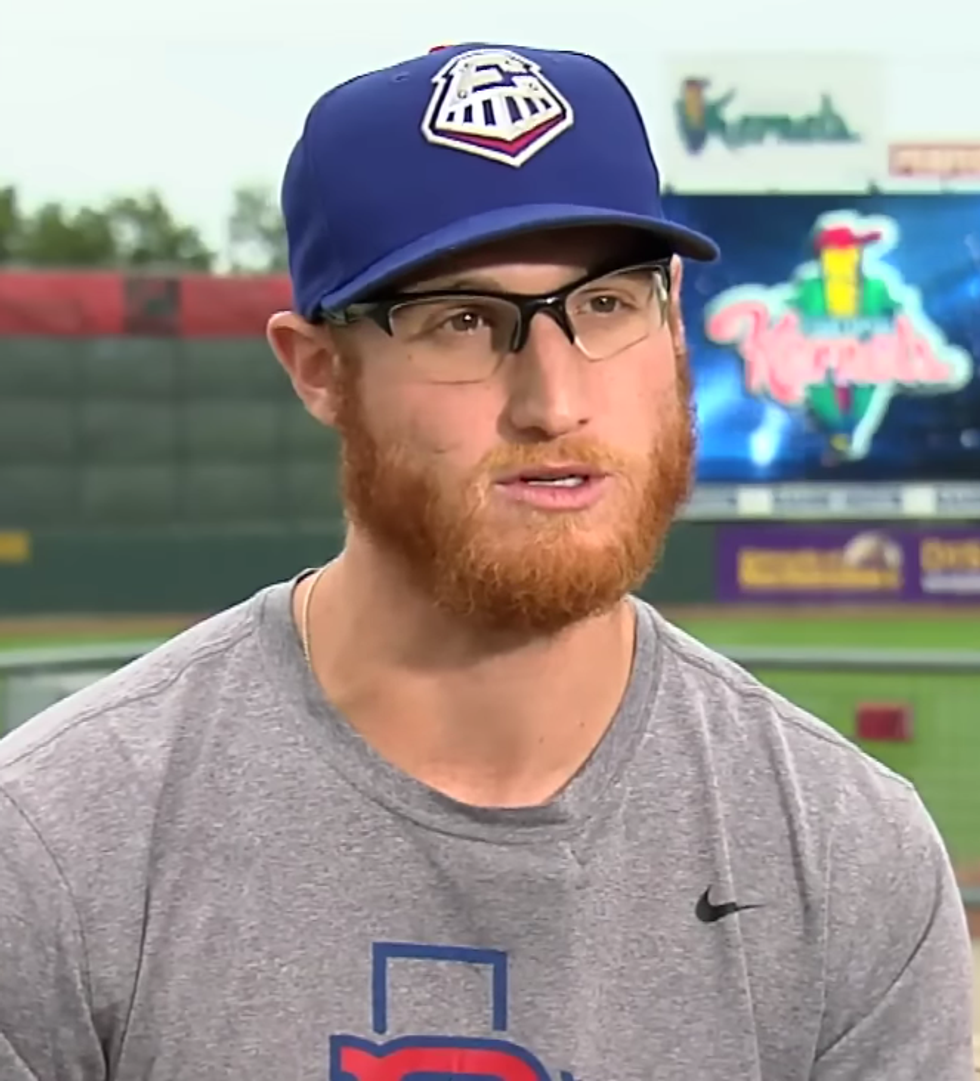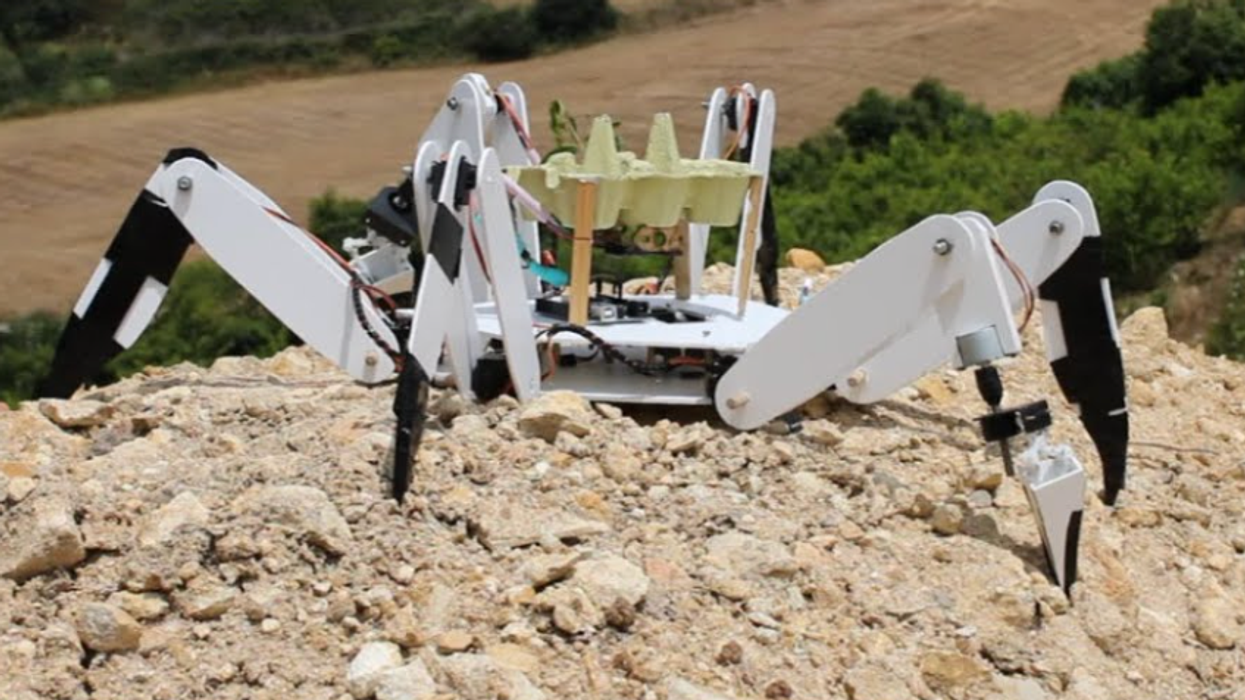What a week. Rough for all Californians. Exhausting for the firefighters on the front lines. Heart-shattering for those who lost homes and loved ones. But a special "Truman Show" kind of hell for the cadre of men and women who've not just watched California burn, fire ax in hand, for the past two or three or five decades, but who've also fully understood the fire policy that created the landscape that is now up in flames.
"What's it like?" Tim Ingalsbee repeated back to me, wearily, when I asked him what it was like to watch California this past week. In 1980, Ingalsbee started working as a wildland firefighter. In 1995, he earned a doctorate in environmental sociology. And in 2005, frustrated by the huge gap between what he was learning about fire management and seeing on the fire line, he started Firefighters United for Safety, Ethics, and Ecology. Since then FUSEE has been lobbying Congress, and trying to educate anybody who will listen, about the misguided fire policy that is leading to the megafires we are seeing today.
So what's it like? "It's just … well … it's horrible. Horrible to see this happening when the science is so clear and has been clear for years. I suffer from Cassandra syndrome," Ingalsbee said. "Every year I warn people: Disaster's coming. We got to change. And no one listens. And then it happens."
The pattern is a form of insanity: We keep doing overzealous fire suppression across California landscapes where the fire poses little risk to people and structures. As a result, wildland fuels keep building up. At the same time, the climate grows hotter and drier. Then, boom: the inevitable. The wind blows down a power line, or lightning strikes dry grass, and an inferno ensues. This week we've seen both the second- and third-largest fires in California history. "The fire community, the progressives, are almost in a state of panic," Ingalsbee said. There's only one solution, the one we know yet still avoid. "We need to get good fire on the ground and whittle down some of that fuel load."
Yes, there's been talk across the U.S. Forest Service and California state agencies about doing more prescribed burns and managed burns. The point of that "good fire" would be to create a black-and-green checkerboard across the state. The black burned parcels would then provide a series of dampers and dead ends to keep the fire intensity lower when flames spark in hot, dry conditions, as they did this past week. But we've had far too little "good fire," as the Cassandras call it. Too little purposeful, healthy fire. Too few acres intentionally burned or corralled by certified "burn bosses" (yes, that's the official term in the California Resources Code) to keep communities safe in weeks like this.
Academics believe that between 4.4 million and 11.8 million acres burned each year in prehistoric California. Between 1982 and 1998, California's agency land managers burned, on average, about 30,000 acres a year. Between 1999 and 2017, that number dropped to an annual 13,000 acres. The state passed a few new laws in 2018 designed to facilitate more intentional burning. But few are optimistic this, alone, will lead to significant change. We live with a deathly backlog. In February 2020, Nature Sustainability published this terrifying conclusion: California would need to burn 20 million acres — an area about the size of Maine — to restabilize in terms of fire.
Mike Beasley, deputy fire chief of Yosemite National Park from 2001 to 2009 and retired interagency fire chief for the Inyo National Forest and the Bureau of Land Management's Bishop Field Office, was in a better mood than Ingalsbee when I reached him, but only because as a part-time Arkansan, part-time Californian and Oregonian, Beasley seems to find life more absurd. How does California look this week? He let out a throaty laugh. "It looks complicated," he said. "And I think you know what I mean by that."
Beasley earned what he called his "red card," or wildland firefighter qualification, in 1984. To him, California, today, resembles a rookie pyro Armageddon, its scorched battlefields studded with soldiers wielding fancy tools, executing foolhardy strategy. "Put the wet stuff on the red stuff," Beasley summed up his assessment of the plan of attack by Cal Fire, the state's behemoth "emergency response and resource protection" agency. Instead, Beasley believes, fire professionals should be considering ecology and picking their fights: letting fires that pose little risk burn through the stockpiles of fuels. Yet that's not the mission. "They put fires out, full stop, end of story," Beasley said of Cal Fire. "They like to keep it clean that way."
(Cal Fire, which admittedly is a little busy this week, did not respond to requests to comment before this story published.)
So it's been a week. Carl Skinner, another Cassandra, who started firefighting in Lassen County in 1968 and who retired in 2014 after 42 years managing and researching fire for the U.S. Forest Service, sounded profoundly, existentially tired. "We've been talking about how this is where we were headed for decades."
"It's painful," said Craig Thomas, director of the Fire Restoration Group. He, too, has been having the fire Cassandra conversation for 30 years. He's not that hopeful, unless there's a power change. "Until different people own the calculator or say how the buttons get pushed, it's going to stay that way."
A six-word California fire ecology primer: The state is in the hole.
A seventy-word primer: We dug ourselves into a deep, dangerous fuel imbalance due to one simple fact. We live in a Mediterranean climate that's designed to burn, and we've prevented it from burning anywhere close to enough for well over a hundred years. Now climate change has made it hotter and drier than ever before, and the fire we've been forestalling is going to happen, fast, whether we plan for it or not.
Megafires, like the ones that have ripped this week through 1 million acres (so far), will continue to erupt until we've flared off our stockpiled fuels. No way around that.
When I reached Malcolm North, a research ecologist with the U.S. Forest Service who is based in Mammoth, California, and asked if there was any meaningful scientific dissent to the idea that we need to do more controlled burning, he said, "None that I know of."
How did we get here? Culture, greed, liability laws and good intentions gone awry. There are just so many reasons not to pick up the drip torch and start a prescribed burn even though it's the safe, smart thing to do.
The overarching reason is culture. In 1905, the U.S. Forest Service was created with a military mindset. Not long after, renowned American philosopher William James wrote in his essay "The Moral Equivalent of War" that Americans should redirect their combative impulses away from their fellow humans and onto "Nature." The war-on-fire mentality found especially fertile ground in California, a state that had emerged from the genocide and cultural destruction of tribes who understood fire and relied on its benefits to tend their land. That state then repopulated itself in the Gold Rush with extraction enthusiasts, and a little more than half a century later, it suffered a truly devastating fire. Three-thousand people died, and hundreds of thousands were left homeless, after the 1906 San Francisco earthquake and attendant fires. The overwhelming majority of the destruction came from the flames, not the quake. Small wonder California's fire ethos has much more in common with a field surgeon wielding a bone saw than a preventive medicine specialist with a tray full of vaccines.
More quantitatively — and related — fire suppression in California is big business, with impressive year-over-year growth. Before 1999, Cal Fire never spent more than $100 million a year. In 2007-08, it spent $524 million. In 2017-18, $773 million. Could this be Cal Fire's first $1 billion season? Too early to tell, but don't count it out. On top of all the state money, federal disaster funds flow down from "the big bank in the sky," said Ingalsbee. Studies have shown that over a quarter of U.S. Forest Service fire suppression spending goes to aviation — planes and helicopters used to put out fire. A lot of the "air show," as he calls it, happens not on small fires in the morning, when retardant drops from planes are most effective, but on large fires in the afternoon. But nevermind. You can now call in a 747 to drop 19,200 gallons of retardant. Or a purpose-designed Lockheed Martin FireHerc, a cousin of the C-130. How cool is that? Still only 30% of retardant is dropped within 2,000 yards of a neighborhood, meaning that it stands little chance of saving a life or home. Instead the airdrop serves, at great expense, to save trees in the wilderness, where burning, not suppression, might well do more good.
This whole system is exacerbated by the fact that it's not just contracts for privately owned aircraft. Much of the fire-suppression apparatus — the crews themselves, the infrastructure that supports them — is contracted out to private firms. "The Halliburton model from the Middle East is kind of in effect for all the infrastructure that comes into fire camps," Beasley said, referencing the Iraq war. "The catering, the trucks that you can sleep in that are air-conditioned…"
Cal Fire pays firefighters well, very well. (And perversely well compared with the thousands of California Department of Corrections inmates who serve on fire crews, which is very much a different story.) As the California Policy Center reported in 2017, "The median compensation package — including base pay, special pay, overtime and benefits — for full time Cal Fire firefighters of all categories is more than $148,000 a year."
The paydays can turn incentives upside down. "Every five, 10, 15 years, we'll see an event where a firefighter who wants [to earn] overtime starts a fire," said Crystal Kolden, a self-described "pyrogeographer" and assistant professor of fire science in the Management of Complex Systems Department at the University of California, Merced. (She first picked up a drip torch in 1999 when working for the U.S. Forest Service and got hooked.) "And it sort of gets painted as, 'Well, this person is just completely nuts.' And, you know, they maybe are." But the financial incentives are real. "It's very lucrative for a certain population of contractors."
By comparison, planning a prescribed burn is cumbersome. A wildfire is categorized as an emergency, meaning firefighters pull down hazard pay and can drive a bulldozer into a protected wilderness area where regulations typically prohibit mountain bikes. Planned burns are human-made events and as such need to follow all environmental compliance rules. That includes the Clean Air Act, which limits the emission of PM 2.5, or fine particulate matter, from human-caused events. In California, those rules are enforced by CARB, the state's mighty air resources board, and its local affiliates. "I've talked to many prescribed fire managers, particularly in the Sierra Nevada over the years, who've told me, 'Yeah, we've spent thousands and thousands of dollars to get all geared up to do a prescribed burn,' and then they get shut down." Maybe there's too much smog that day from agricultural emissions in the Central Valley, or even too many locals complain that they don't like smoke. Reforms after the epic 2017 and 2018 fire seasons led to some loosening of the CARB/prescribed fire rules, but we still have a long way to go.
"One thing to keep in mind is that air-quality impacts from prescribed burning are minuscule compared to what you're experiencing right now," said Matthew Hurteau, associate professor of biology at University of New Mexico and director of the Earth Systems Ecology Lab, which looks at how climate change will impact forest systems. With prescribed burns, people can plan ahead: get out of town, install a HEPA filter in their house, make a rational plan to live with smoke. Historical accounts of California summers describe months of smoky skies, but as a feature of the landscape, not a bug. Beasley and others argue we need to rethink our ideas of what a healthy California looks like. "We're used to seeing a thick wall of even-aged trees," he told me, "and those forests are just as much a relic of fire exclusion as our clear skies."
In the Southeast which burns more than twice as many acres as California each year — fire is defined as a public good. Burn bosses in California can more easily be held liable than their peers in some other states if the wind comes up and their burn goes awry. At the same time, California burn bosses typically suffer no consequences for deciding not to light. No promotion will be missed, no red flags rise. "There's always extra political risk to a fire going bad," Beasley said. "So whenever anything comes up, people say, OK, that's it. We're gonna put all the fires out." For over a month this spring, the U.S. Forest Service canceled all prescribed burns in California, and training for burn bosses, because of COVID-19.
I asked Beasley why he ignited his burns anyway when he was Yosemite fire chief. "I'm single! I'm not married! I have no kids. Probably a submarine captain is the best person for the job." Then he stopped joking. "I was a risk taker to some degree. But I also was a believer in science."
On Aug. 12, 2020, California Gov. Gavin Newsom, the U.S. Forest Service chief and others signed a memorandum of understanding, or MOU, that the state needs to burn more. "The health and wellbeing of California communities and ecosystems depend on urgent and effective forest and rangeland stewardship to restore resilient and diverse ecosystems," the MOU states. The document includes a mea culpa: "California's forests naturally adapted to low-intensity fire, nature's preferred management tool, but Gold Rush-era clearcutting followed by a wholesale policy of fire suppression resulted in the overly dense, ailing forests that dominate the landscape today."
Ingalsbee looks at the MOU and thinks, That's not worth the paper it's printed on. Likewise Nick Goulette, executive director of the Watershed Research and Training Center, has seen too little movement for too long to believe anything but utter calamity can get us back on track. In 2014, Goulette participated in a planning exercise known as the Quadrennial Fire Review, or QFR, that asked the grim question: What is the disaster scenario that finally causes us to alter in a meaningful way our relationship and response to fire? The answer: something along the lines of a megafire taking out San Diego. In the wake of it, Goulette and others imagined one scenario in which the U.S. Forest Service morphed into an even more militaristic firefighting agency that "overwhelmingly emphasizes full suppression" and is "extremely risk averse." But they also envisioned a scenario that spawned a new kind of fire force, one focused on "monitoring firesheds" and dedicated to changing the dominant philosophy away "from the war on fire to living with fire."
This exercise took place three years before the devastating 2017 Napa and Sonoma fires, and four years before the Camp Fire destroyed Paradise in 2018. Goulette thought those events would have prompted more change. The tragedies did lead to some new legislation and some more productive conversations with Cal Fire. But there's just so much ground we need to make up.
When asked how we were doing on closing the gap between what we need to burn in California and what we actually light, Goulette fell into the familiar fire Cassandra stutter. "Oh gosh. … I don't know. …" The QFR acknowledged there was no way prescribed burns and other kinds of forest thinning could make a dent in the risk imposed by the backlog of fuels in the next 10 or even 20 years. "We're at 20,000 acres a year. We need to get to a million. What's the reasonable path toward a million acres?" Maybe we could get to 40,000 acres, in five years. But that number made Goulette stop speaking again. "Forty thousand acres? Is that meaningful?" That answer, obviously, is no.
The only real path toward meaningful change looks politically impossible. Goulette said we need to scrap the system and rethink what we could do with Cal Fire's annual budget: Is this really the best thing we could do with several billion dollars to be more resistant to wildfire? Goulette knows this suggestion is so laughably distasteful and naive to those in power that uttering it as the director of a nonprofit like the Watershed Research and Training Center gets you kicked out of the room.
Some fire Cassandras are more optimistic than others. Lenya Quinn-Davidson, area fire adviser for the University of California Cooperative Extension and director of the Northern California Prescribed Fire Council, remains hopeful. She knows the history. She understands that the new MOU is nonbinding. Still she's working on forming burn cooperatives and designing burner certificate programs to bring healthy fire practices back into communities. She'd like to get Californians back closer to the fire culture in the Southeast where, she said, "Your average person goes out back with Grandpa, and they burn 10 acres on the back 40 you know, on a Sunday." Fire is not just for professionals, not just for government employees and their contractors. Intentional fire, as she sees it, is "a tool and anyone who's managing land is going to have prescribed fire in their toolbox." That is not the world we've been inhabiting in the West. "That's been the hard part in California," Quinn-Davidson said. "In trying to increase the pace and scale of prescribed fire, we're actually fighting some really, some really deep cultural attitudes around who gets to use it and where it belongs in society."
All Cassandras believe California's wildfires will get worse, much worse, before they get better. Right now, said Crystal Kolden, the state's fuel management plan, such as it is, is for Cal Fire to try to do prescribed burns in shoulder season. But given that the fires are starting earlier in the year and lasting later (we are not even this year's traditional fire season yet), the shoulder doesn't really exist. "So where is the end?" she asks. "It's not in sight, and we don't know when it will be." The week before this past round of fires saw the hottest temperatures ever recorded in California, the hottest temperature ever reliably recorded on earth: 130 degrees, more than half the boiling point of water, and just 10 degrees below what scientist consider to be the absolute upper limit of what the human body can endure for 10 minutes in humidity.
"Meanwhile, our firefighters are completely at the breaking point," said Kolden, and there's little they can do to stop a megafire once one starts. "And after a while you start to see breakdowns and interruptions in other critical pieces, like our food systems, our transportation systems." It doesn't need to be this way. We didn't need to get here. We are not suffering from a lack of knowledge. "We can produce all the science in the world, and we largely understand why fires are the way they are," said Eric Knapp, a U.S. Forest Service research ecologist based in Redding, California. "It's just that other social political realities get in the way of doing a lot of what we need to do."
The fire and climate science before us is not comforting. It would be great to call in a 747, dump 19,200 gallons of retardant on reality and make the terrifying facts fade away. But ignoring the tinderbox that is our state and our planet invites more madness, not just for the Cassandras but for us all.
As Ingalsbee said, "You won't find any climate deniers on the fire line."
This article first appeared on ProPublica. You can read it here.

















 A road near equatorial Atlantic OceanCanva
A road near equatorial Atlantic OceanCanva Waves crash against rocksCanva
Waves crash against rocksCanva
 Image artifacts (diffraction spikes and vertical streaks) appearing in a CCD image of a major solar flare due to the excess incident radiation
Image artifacts (diffraction spikes and vertical streaks) appearing in a CCD image of a major solar flare due to the excess incident radiation
 Brady Feigl in February 2019.
Brady Feigl in February 2019.
 Yonaguni Monument, as seen from the south of the formation.
Yonaguni Monument, as seen from the south of the formation. 

